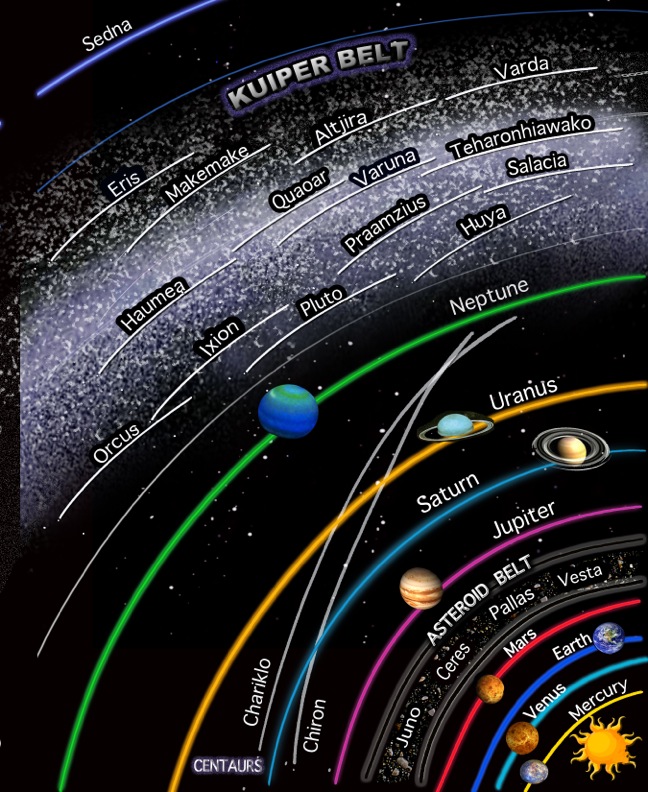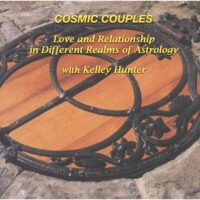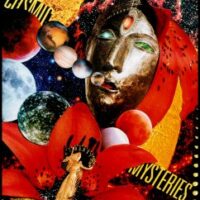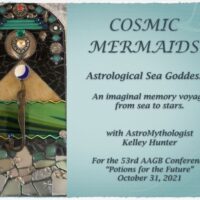All beginnings are a result of harmony,
for all new things emerge when the necessary creative forces unite without obstruction.
—Jeff Jawer, pioneer in Astrology 1946-2015 [reference in end notes]
Until the late 1700s, the outer limit of our solar system was defined by Saturn, a planet we can see with the unaided eye. Then, in 1781, almost two hundred years after the invention of the telescope, Uranus was discovered, followed by Neptune in 1846 and Pluto in 1930. Our astronomical vision expanded in a triple jump. In one hundred fifty years, the size of the solar system had grown in our view about 450%. Another way to understand this is that Saturn takes 29 years to circle the Sun. The orbit of Uranus is 84 years, a long lifetime, while Neptune and Pluto with orbits of 165 years and 248 years, respectively, span beyond a lifetime or more.
As the mythological god Saturn was dethroned, so now the planet Saturn’s reign over the boundaries of the solar system was superseded. In the myth, Jupiter, Neptune and Pluto (Greek Zeus, Poseidon and Hades) divided up their father’s kingdom. Jupiter ruled over the sky, Neptune presided over the oceans, and Pluto had dominion in the underworld and the riches lying under the earth. Since Jupiter was already a planet’s name, astronomers went back a generation, using the name Uranus (Ouranos), Saturn’s father. When a new planet is discovered, we can get an idea about its meaning by the context of its sighting. Here follows a short introduction to these new discoveries and their times.
Uranus, Sky God
I hold it, that a little rebellion, now and then, is a good thing,
and as necessary in the political world as storms in the physical.
—Thomas Jefferson, 1781
The discovery of the planet named for the immortal sire of a rather rebellious lineage certainly did cause a storm in the sky as well as the earth. Like a thunderbolt of Jupiter, the “accidental” discovery of Uranus by William (and Caroline) Herschel in 1781 was concurrent with political rebellions in America and France. A rash of inventions—the steam engine, cotton gin, lithography—inaugurated the industrial revolution. Kant’s Critique of Pure Reason introduced a radical philosophy. These breakthroughs in independence, inventiveness and new thought are typical of the lightning bolt changes in awareness reflected by astrological Uranus. The spirit of the age ushered in by the new planet is well expressed in Jefferson’s statement above.
This god of the sky also led to new discoveries in his own realm. The eccentric, “oddball” planet, Uranus, asserts its individuality by rotating on its side like no other. Because of certain irregularities in its orbit, astronomers hypothesized the existence of another planet further out from the sun. Calculations were worked on simultaneously by two astronomers in England and France, unknown to each other. In 1846 the new planet was sighted by observatories in both countries: Neptune.
Neptune, Ocean God
Silence reigned over the before tumultuous but now deserted deck.
An intense copper calm, like a universal yellow lotus,
was more and more unfolding its noiseless measureless leaves upon the sea.
—Herman Melville, Moby Dick, 1851.
The mid 1800’s was a period of suffering, dislocation, idealism and humanitarianism, all astrological themes of Neptune. 1846 was the year of the Irish potato famine. The most widespread wave of political upheavals in European history became know as the Revolutions of 1848, Spring of Nations, or People’s Spring. Abolition was on the rise: slaves were freed in French colonies, the Danish West Indies and Suriname. Jewish people were given equality in Prussia. The first women’s rights convention was held in Seneca Falls, New York “to discuss the social, civil, and religious condition and rights of woman.” The first homeopathic medical college opened in Pennsylvania as well as the first U.S. Women’s medical school, in Boston. In 1849 thousands followed the glittering dream of the California gold rush. During the decade of the 1840’s, the Mormons founded Salt Lake City. Abdu’l Bahá, founder of the Bahá’í faith, was born, as were Annie Besant and C.W. Ledbetter, both leaders of the Theosophical society. Literature of the day included Karl Marx’s Communist Manifesto and Dickens’s David Copperfield, both concerned with the suffering of the poor. Uncle Tom’s Cabin reflected the upcoming U.S. Civil War and its disorienting aftermath. Poets Thoreau, Whitman and Emerson, all interested in the mystic Christianity of Emanuel Swedenborg, were publishing work. Herman Melville was writing Moby Dick, which came out in 1851, the voice of an age. Even Niagara Falls stopped flowing for over 24 hours, due to an ice jam.
Neptune is a large, gaseous planet, as predicted by astronomers, but continued perturbation in the orbit of Uranus as well as the orbit of Neptune indicated the presence of another planet even further beyond. The solar system was rapidly stretching.
Pluto, Underworld God
Cold, dark, lonely iceballs, Pluto and Charon are well named
after the god of the underworld and his gloomy ferryman.
—Clyde Tombaugh, Patrick Moore, Out of the Darkness: The Planet Pluto, 1980
Just after the turn of the twentieth century, astronomers started their search for another planet. These new forays into the unknown reaches of the sky were paralleled by penetration into unknown reaches in other fields as well. In 1905-1906, Einstein was publishing his theory of relativity with implications unrealized even by himself, while Freud was pioneering the psychology of the subconscious. In the world of art, classical concepts of beauty and harmony were challenged. This period heard the development of jazz with its dissonant harmonies. Picasso’s Cubist vision, introduced with the painting of three prostitutes, “Les Demoiselles d’Avignon,” shocked the classical art salons which reigned over the art world of the time. Symbolizing the emergence of energies from ancient depths, the painting signified a new and initially disturbing dimension of artistic representation, as discussed by art historian Robert Rosenblum: “The most immediate quality of “Les Demoiselles” is a barbaric, dissonant power whose excitement and savagery were paralleled not only by such eruptions of vital energy as Matisse’s art of 1905-1910, but by music of the following decade….No masterpiece of Western painting has reverberated so far back in time as Picasso’s five heroic nudes who carry across centuries and millenniums. “
Picasso’s multifaceted, disorienting view of the feminine figures drew from a creative source new to the times, representing and requiring of the viewer a major shift in perspective similar to that of the sensed but unseen new planetary symbol. Again from Rosenblum: “Picasso is prophetic in his identification of the creativity of this century with feminine chthonic energy….with all the primordial fear attributed to chthonic power,” the raw, instinctive energy of the underworld realm.
Astronomer Percival Lowell spent the last years of his life searching for the elusive and mysterious planet. After his death, the Lowell Observatory in Arizona continued his work. Finally, after painstaking photographic and microscopic work, Planet “X” was located by self-taught astronomer Clyde Tombaugh in January/February 1930. As he wrote 50 years later, in a book co-written with Patrick Moore, “The discovery of Pluto was due to a remarkable chain of accidental events spanning several decades, decreed by fate.”
The 1930 discovery date was just months after the devastating U.S. stock market crash and St. Valentine’s Day massacre involving famous gangsters, both events synchronistically appropriate to the astro-psychological correlations of Pluto. Devastating changes were evident in the political arena during this time as well. The world had experienced its first great war. By the time of Pluto’s discovery, dictatorships in the axis countries were in effect. Mussolini was coming to power in 1930, declaring, “We have buried the putrid corpse of liberty.” Japan invaded Manchuria in 1931. In 1933, Hitler was appointed chancellor of Germany—a man with a compulsion that led to the Holocaust. These forces were soon to constellate a Second World War, one that would end with the atomic bomb.
The search for Pluto in the distant dark was concurrent with the opening of the psychoanalytic age by Sigmund Freud. The realm of the subconscious, of repression and the basic issues of sexuality researched by this father of psychoanalysis were opened further into the region of the collective unconscious by Carl Jung. Through both self-analysis and his work with psychotic patients, those taken over by the “demons” of the “underworld”, he came into contact with a stratum of primordial psychic structures he called “archetypes”, energies that shape themselves into mythic and dream images primary to the human experience. Jung’s work progressed, like that of an archeologist digging into the basic ground of the human psyche, into the paradoxes and continual movement of images and dreams, into the houses of madness, and into such “occult” philosophical traditions as alchemy and astrology. Through this work, Jung demonstrated the emergence of Plutonian consciousness into our experience.
As Jung was opening the way into the invisible psychic realm which affects our visible behavior, physicists were delving into the invisible forces in the atom which conditioned the manifestation of matter. Formerly thought to be the basic building blocks of the material world , atoms were discovered to consist of intangible subatomic particles, a continually shifting dance of energy.“ Einstein’s famous equation, E=MC², proved that mass is a form of energy, therefore not indestructible like the billiard ball atoms of Newtonian physics. Mass is now understood to be a form of energy which can be transmuted into other forms of energy, literally changed from one thing to another.
This Plutonian word, “transmutation,” was used in the Middle Ages to mean the alchemical conversion of base metals into gold and silver. Today the term is used in reference to the chemical conversion of atoms of a given element into atoms of a different isotope or of a different element, as in radioactive disintegration, by nuclear bombardment and, more generally, in the continual shifting of electrons between molecules.
These, then, are some of the major developments of the age that sought for and discovered the planet Pluto. Synchronistically speaking, the historical events reflect issues corresponding to this newly sighted member of our solar system. This new “birth” into consciousness can be seen to symbolize our readiness to deal on a new level with these issues. For psychological investigation of what this new symbol represents, we can weave together the foregoing historical developments with the classical mythological themes of Pluto, the Latin name of the god of the underworld. The twentieth century, especially since the planetary discovery in 1930, can be called the Plutonic era. This was soon confirmed with scientific research that led to nuclear fission and its destructive power.
Naming Pluto
As god of death and rebirth, Pluto is daunting, but some stories of its name have caught public sentiment. It is reported that an 11-year-old English girl who named the planet. Venetia Burney was familiar with Greco-Roman mythology and knew that the planets were named for these myths. When her grandfather, Falconer Madan, told her about the new discovery, she suggested the name Pluto for this invisible body in the distant dark of the solar system. He forwarded the idea to a friend, an Oxford professor of astronomy, who passed it along an official chain, eventually to the Lowell Observatory. Since PL are the initials of Percival Lowell, founder of the observatory, it was felt to be especially appropriate. Later asked if there was any fanfare about the naming of Pluto, Venetia said not. In spring of 1930, the news was largely focused on pioneering female aviator, Amy Johnson, who was making her historic solo flight from Britain to Australia. That offers another clue to Pluto’s meaning: the theme of women’s empowerment.
On another front, in 1930 a dog was introduced into the popular Mickey Mouse films. He was briefly known as Rover, but soon got his real name—Pluto, in response to public interest in the new planet of the day. This cartoon character became one of the big stars of the Disney firmament, appearing in at least 89 short animated films. He had his own cartoon series, and even won an Oscar! “Lend a Paw” won the 1942 Academy Award in the category, Short Subjects, Cartoons (now known as Best Animated Short Film). Pluto was a pioneering character for his time, expressing his personality through animation without dialogue.

Even more of an oddball than Uranus, the physical properties of Pluto place its status as a planet in question to this day. With a surprisingly low density of 1.0, Pluto is basically a huge iceberg. Its orbit is highly irregular, coming inside that of Neptune for 20 years of the 248 it takes to circle the Sun. This last happened fairly recently, from 1979-1999. In 1978 a moon was discovered, named Charon after the ferryman of the underworld. Charon is half the size of Pluto, unusually large for a moon, therefore a binary planetary system has been considered. The question is still unresolved. These two bodies are locked face to face in a mutual orbit of 6 days. We see them eclipse each other periodically, as in this artistic interpretation of eclipse photos from (1995) of Charon in front of Pluto.
Four more very tiny moons around Pluto were eventually sighted in 2005 by a Hubble Space Telescope Team and given appropriate underworld names: Styx, Nix, Kerberos and Hydra.
and Hydra.
Based on the Pluto/Charon dynamic in the far edges of the solar system, astronomer Alan Stern predicted the eventually discovery of third planetary realm, with more Pluto-like iceballs, beyond Neptune.
As Tombaugh and Moore wrote in their 1980 Pluto book cited above,
“Its nature is more strange than ever. Its status as an object is engulfed in mystery. Everything about Pluto was unexpected. One can only speculate on what new things will be learned about Pluto in the future.”
Pluto, King of the Kuiper Belt
Well, the future is here. On January 19, 2006 the New Horizons spacecraft was launched to Pluto, finally reaching there in July, 2015, a nine-year journey. We have been richly rewarded with wonderful photos. Now that we are seeing it up close and personal, surface features of Pluto and its moons are visible. The most iconic photo shows that Pluto has a heart!

Pluto’s Heart, a NASA New Horizons photo.
As telescopic technology has became more sophisticated, there have been increasing discoveries of small objects in our solar systems: millions of tiny, odd-shaped rocks in the asteroid belt, and centaur objects, a hybrid class of asteroid-comets. Now we are finding small, icy, Pluto-like objects in a broad circum-stellar disc called the Kuiper Belt, Pluto is the vanguard of this band of planetoids.
The first KBO discovered since Pluto/Charon was QB1 in 1992, nicknamed “Smiley” and eventually named Albion. Many more have popped up since the beginning of the new millennium. In 2005 a KBO, nicknamed ‘Xena’ for the popular television character, looked to be larger than Pluto and twice as far away. It became the catalyst for controversy and the reclassification of Pluto as a ‘dwarf planet’. A public hue and cry ensued. This new body, therefore officially named Eris, for the Greek Goddess of Discord, and its one moon named for her lawless daughter, Dysnomia. My opinion is that Pluto doesn’t care what we call it. Pluto will do as Pluto does, and it is not wise to disregard the God of Death and Rebirth! It now appears that Eris is more massive than Pluto, but a touch smaller.
Thousands of small bodies have been sighted and catalogued in this remote, far out neighborhood of our solar system; many more with diameters of over 100 kilometers/ 62 miles are anticipated. The Kuiper Belt is like a larger and more distant asteroid belt. Pluto is one of the select few currently designated as dwarf planets, along with Haumea, Makemake and Eris, all with rounded shapes. Ceres, although in much closer to us in asteroid belt, is similarly rounded and now reclassified as a dwarf planet. When we know more about these new remote objects, it is likely that some will join the dwarf planet roster. Most of these KBOs (Kuiper Belt Objects) are irregular in shape. To try to keep track of all these new discoveries, astronomers have come up with various categories, such as plutoids, plutinos, cubewanos, sednoids and more. Thematic names are used for different categories: near Pluto we have more gods of the underworld; heading out names represent a cross-cultural roster of indigenous creator gods and goddesses. How exciting to reawaken such archetypal levels of consciousness in this third millennium! For a fun way to get to know many of the new planetoids, please look up my Planetary Gods & Goddesses Coloring Book
Pluto, on the front edge of this new horizon, can be considered “King of the Kuiper Belt,”
reigning over a burgeoning bevy of KBOs and TNOs (TransNeptunian Objects) stretching into the distant dark. Mythically Pluto was the ruler of the underworld. We now have scientific confirmation.
And many more ancient gods returning!

Kuiper Belt, the deep dark far out realm in our solar system
[Note: This article was originally written in 1985 as part of my Master’s thesis. The quote from Astrologer Jeff Jawer, was taken from his article, “The Discoveries of Uranus, Neptune and Pluto,” in Astrology Now magazine, Vol.IV, No.2, June-July 1979.





